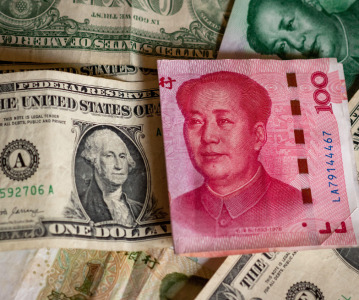CPHI China Report Predicts Domestic Growth to Outpace Exports

CPHI — a division of UBM EMEA — alongside UBM Sinexpo, announces the findings of the Pharma Insights China 2015 report.
This research was conducted post the recent CPHI China 2015 event and provides a holistic overview of opinion from a survey conducted amongst Chinese manufacturers and international companies operating in China.
The overall picture reveals an extremely positive outlook for growth in Chinese pharma, with the domestic market emerging as the driving force. Sitting as the world’s second largest pharmaceutical economy, China will remain a rapidly expanding market, but unlike pharma manufacturing in the West, China’s growth is not dependent on exports and regulatory standards being met — the domestic economic case and cost advantages from large-scale API batches are simply too strong to be resisted.
Unsurprisingly, these favourable economic factors have not gone unnoticed by international companies, including Western manufacturers, who are now looking to alter their business strategies to capitalise. On average, domestic respondents predict a near doubling in their sales over the next 5 years, indicating growth in this sector remains strong for the immediate future — almost 70% of companies surveyed said they are focusing chiefly on investing in APIs and generics. In addition, IMS Health research showed that growth is not uniform across the market and ‘emerging cities’ have the highest growth potential, which is where domestic manufacturers are now looking to target their business efforts.
In the longer term, CPHI forecasts that the market may begin to develop higher margin, lower volume finished formulation drugs once a critical demand is reached from China’s increasingly aware middle-class population. However, there is little belief that such changes will be instrumented for at least 10 years, and it is thought that China’s growing API and generics domination could, in fact, be hindering the development of China’s evolution into exports and finished formulations.
This is particularly significant when looking at exporting to the West, where there is a more complex regulatory framework, particularly for clinical trial and commercial products. In contrast, the majority of manufacturing facilities operating in China at present are large scale and designed to produce high volumes of generic APIs. Thus, if the market’s focus does start to shift away from APIs, new pilot and scale-up plants will be required.
Of the surveyed international companies operating within the Chinese market, CPHI observed that 100% of them are looking for distribution partners throughout the country to increase sales across China’s diverse regions — distribution is a well-known problem for market entry. In fact, the chief difficulty for foreign companies working within China remains selecting the right Chinese companies to work alongside. Interestingly, ‘trust in Chinese partners’ continues to be a key issue for many Western companies operating in the region, with respondents reporting concerns about ‘supply chain and distribution integrity’, ‘patent protection’ and, perhaps more surprisingly, the ‘knowledge base within regional manufacturers’. However, despite these potential hurdles, 85% of the foreign companies surveyed predict an increase in turnover of 50–100% over the next 5 years, indicating that this market remains highly lucrative for companies able to navigate complex business relationships. When asked if they would invest further should they have access to increased market protection in the future, 100% of foreign companies said yes.
However, in direct contrast to the majority of other large pharmaceutical export markets, the US did not emerge as the main pharma economy target — less than half of respondents wanted to instigate or further business in this market. Instead, the majority of Chinese ingredients manufacturers are looking to deepen ties with European (62.8%) and Indian (74.4%) markets. Again, this could be indicative of a lack of trust and/or FDA-approved facilities within the Chinese market, and over the short term, manufacturers clearly feel there are quicker wins to be made selling to European and Indian manufacturers.
“The continued expansion of China’s domestic market makes it an incredibly exciting time for all manufacturers right now, both domestic and international. It is unusual for a major pharma economy’s future growth to be driven predominately by domestic sales, rather than from exports, and clearly international companies must now act to get a foothold in this region.
"The crucial factor for success is local partners and local knowledge, which is why attendance at CPHI China has proved so vital for successful companies in the region. As with other markets that have moved up the value chain, we believe China will see increased contract manufacturing and a continued growth in biologics over the next 5 years. The view on the ground, is that, rather than move towards complex finished formulations we will first see China’s manufacturers diversify into biologics and new low cost, high growth regions like South America,” said Chris Kilbee, Group Director Pharma, UBM EMEA.
For a free copy of the online Pharma Insights report, please visit:
www.cphi.com/europe/networking/cphi-pharma-insights
Related News
-
News Lessons from CPHI Milan 2024: Sunny Intervals for Pharma Manufacturing?
As the 2024 CPHI conference wrapped up in Milan, we caught up with L.E.K. Consulting – a global strategy consulting firm with deep expertise in pharma manufacturing – to discuss evolving market perspectives and business outlook. -
News US BIOSECURE Act passed by US House of Representatives
The controversial act, which has already impacted several foreign companies operating in the US, was passed by the House of Representatives on September 9, 2024. It is now headed for the US Senate before it can be signed into law by President Joe Biden... -
News Pharma Supply Chain People Moves
The latest appointments, promotions, and structural changes across the pharmaceutical supply chain. -
News Drug prices agreed upon as part of the US Inflation Reduction Act
The Inflation Reduction Act brought into constitution by the Biden administation in 2022, which proposed a drug price negotiation between the government and pharmaceutical companies, has reached it's first agreement. -
News BIOSECURE Act continues to loom over Chinese pharma manufacturers
With the US BIOSECURE Act on its way to passing into legislation, Chinese companies are facing declining revenues within the first half of 2024 as US pharmaceutical and healthcare companies pull their businesses from the country. -
News Ophthalmologic drug product Eylea faces biosimilar threats after FDA approvals
Regeneron Pharmaceutical’s blockbuster ophthalmology drug Eylea is facing biosimilar competition as the US FDA approves Biocon’s Yesafili and Samsung Bioepis/Biogen’s Opuviz. -
News ONO Pharmaceutical expands oncology portfolio with acquisition of Deciphera
ONO Pharmaceutical, out of Japan, is in the process of acquiring cancer-therapy maker Deciphera Pharmaceuticals for US$2.4 billion. -
News First offers for pharma from Medicare drug price negotiations
Ten high-cost drugs from various pharma manufacturers are in pricing negotiations in a first-ever for the US Medicare program. President Biden’s administration stated they have responded to the first round of offers.
Position your company at the heart of the global Pharma industry with a CPHI Online membership
-
Your products and solutions visible to thousands of visitors within the largest Pharma marketplace
-
Generate high-quality, engaged leads for your business, all year round
-
Promote your business as the industry’s thought-leader by hosting your reports, brochures and videos within your profile
-
Your company’s profile boosted at all participating CPHI events
-
An easy-to-use platform with a detailed dashboard showing your leads and performance




.png)
.png)

.png)